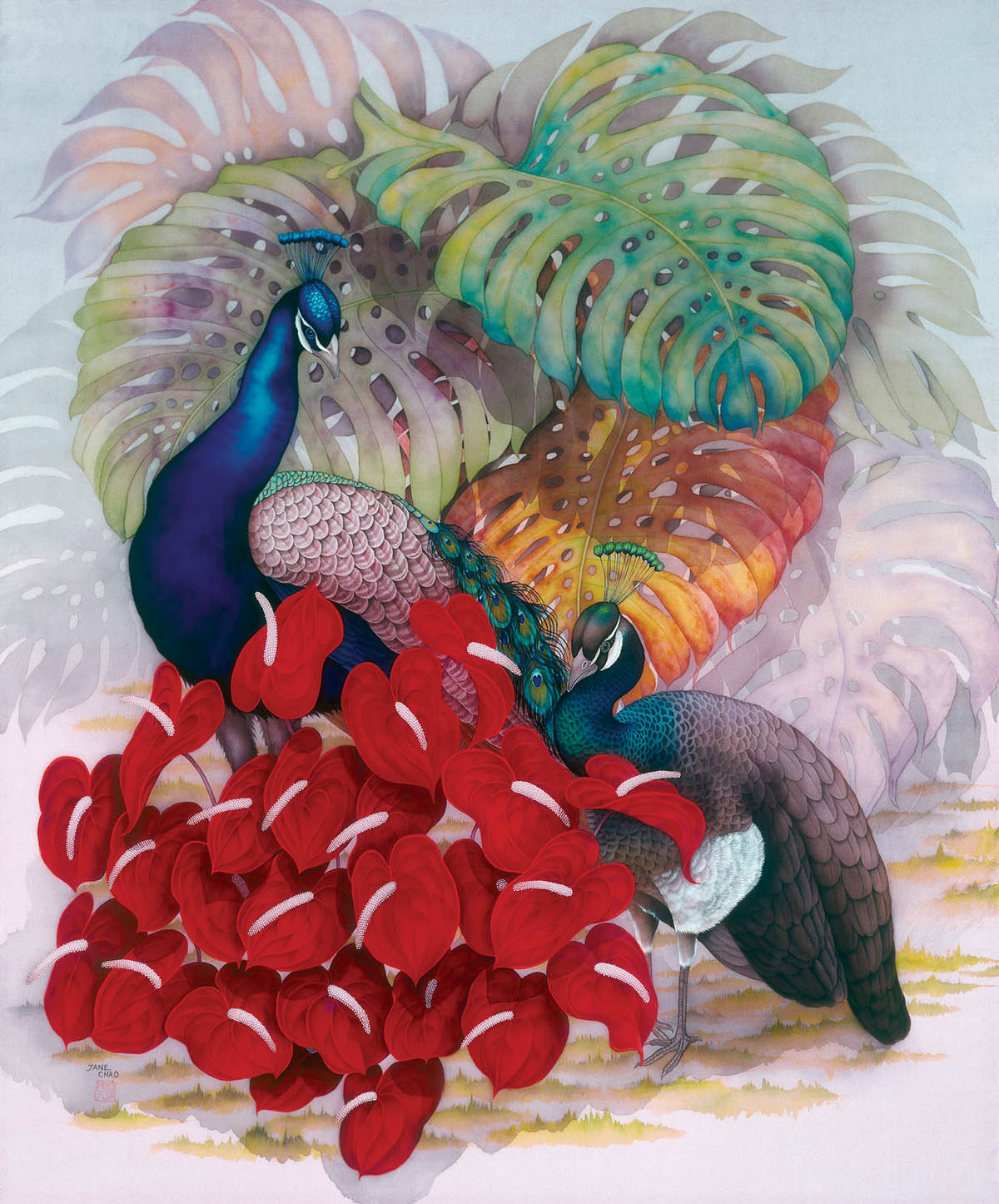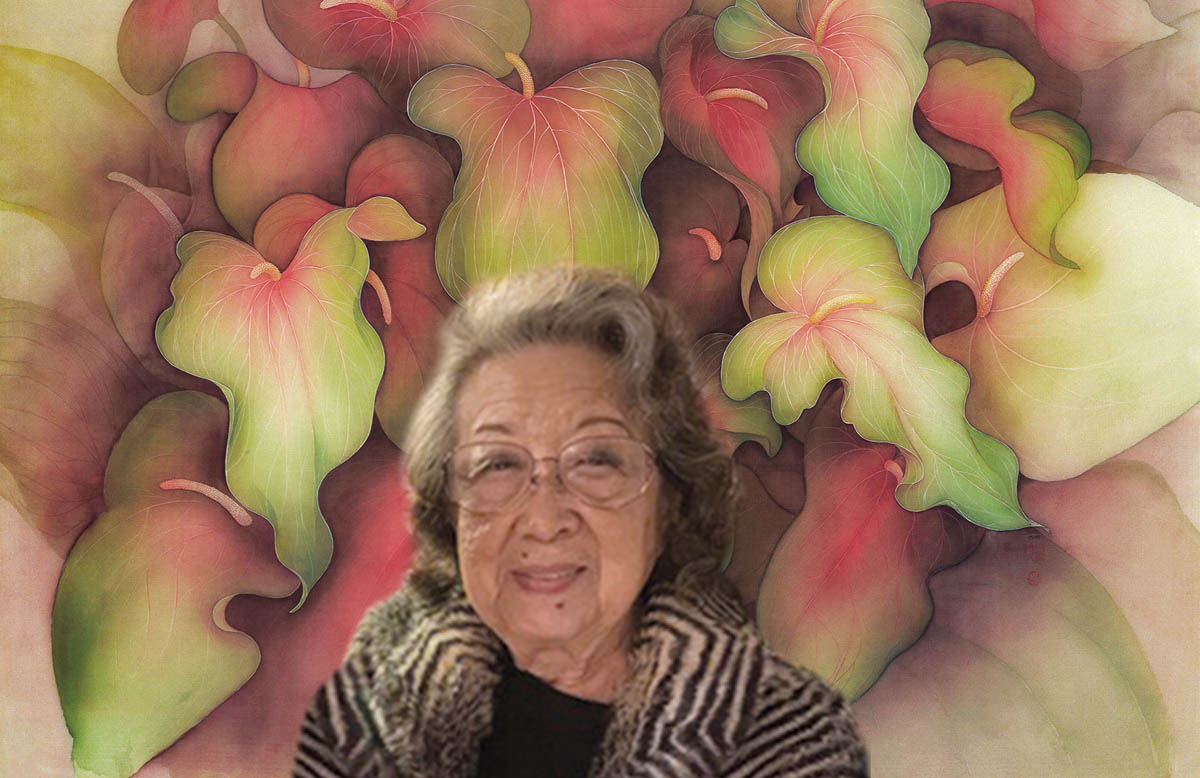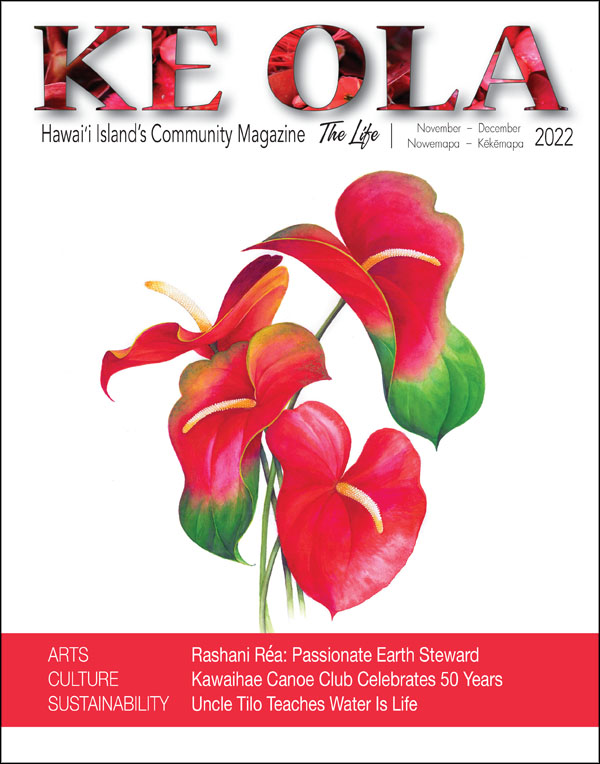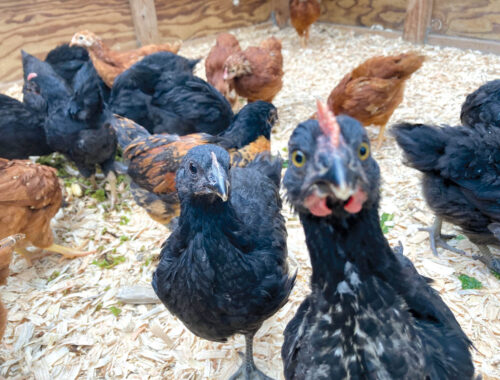
Featured Artists: Jane Chao & Shay Niimi Wahi

Featured Cover Artist: Jane Chao
Jane Chao was born in Harbin, Manchuria, China, in 1929. Her father was in the military—his job was to keep the railroad safe in northern Manchuria which was under Japanese occupation. He was working for the last emperor of China. Jane vividly recalls, “When I was four years old, my father was afraid I may be kidnapped by bandits. At that time there were many bandits in Manchuria. He sent me, my mother, and my older brother to Japan to avoid being kidnapped. Two years later my father joined us in Japan when he was promoted to the position of military attaché from Manchuria to Japan. I spent my elementary education in Tokyo during my childhood. When I was in third grade, my art teacher in school told my mother I should have a real art teacher because I showed talent, so I was sent to a teacher who taught Chinese brush painting, known in Japan as Nanga [Southern Painting].
“When I was 12 years old, my father was promoted to be the Northern Commanding Chief (two star general), stationed in Northern Manchuria, Harbin. We returned to China, and I attended the Japanese Girls High School there, graduating in 1945. During that year, Japan lost the war and surrendered. My father was captured by the Russian Red Army and sent to Siberia. I have not seen my father ever since. Right after my father was captured, the Chinese communists came into town. My mother took me and my brother and escaped to Taiwan—it was the only safe place we could go. I went to a two-year English college in Taiwan. I met my late husband Linus Chao, who was studying fine arts at the Taiwan National Normal University. Through him I met his friends who were almost all artists. I learned art from them, even though I had not touched art brushes since we left Harbin, and I began to paint seriously. In 1955, Linus and I got married in the Catholic church. The church sent Linus to Walt Disney Studios to learn cartoon animation. He produced cartoon animation films for education films and for the church when he returned to Taiwan.
“In 1969, President Kennedy opened immigration to allow qualified persons to apply for immigration to the US. At the time, we had an art studio and produced many cartoon films. Linus applied for immigration, and we moved the whole family to America. Since I was a child in Japan, I knew about Hawai‘i as the place for hula and beautiful music, with no discrimination by race. At that time our children were six, eight, 10, and 13 years old. We needed a safe place to let our children grow. That is the main reason we came to Hawai‘i.

“With Chinese and Japanese art, basically they are with very quiet colors, never using red or green colors directly. After I came to Hawai‘i, my eyes can see nothing but beautiful colors and fragrant smells. I didn’t have enough colors to express the beauty of the flowers of Hawai‘i, so I used many colors to paint my paintings. Obake anthurium are so beautiful; I could not capture enough of the beautiful colors.
“Now I am old and cannot stay in Hawai‘i by myself. I have four children, seven grandchildren, and eight great-grandchildren, and I’m grateful that my daughter can take care of me. After more than five decades, I have recently left the island for Seattle. I took many beautiful pictures of flowers before I left Hawai‘i. I hope I will still paint beautiful flowers until the day I die.”
For more information: jane.chao@me.com
Table of Contents Artist: Shay Niimi Wahi
Shay Niimi Wahl grew up in Pa‘auilo, on the Hāmakua coast. Her rural upbringing made Shay aware of the beauty of the island, which she seeks to capture in her art.
Shayʻs previous career was teaching, where she integrated art into her elementary grade’s classes. After retiring, she began life as a full-time artist. Shay says, “It was a dream come true. I painted to my heart’s content.” What she hadn’t expected in retirement was to resume teaching art, this time to adults.
Shay paints mainly with watercolors on silk and paper, often with sumi ink and acrylic paints. She always begins with the traditional Asian method of gongbi, which is a meticulous detailed style of painting that originated in early China. She includes strokes of the spontaneous style of Chinese painting, xieyi, resulting in a combination of styles and a combined flavor of east and west.
Shay compares her painting style to life in Hawai‘i, where many cultures meet and mix. “My paintings are an expression of aloha, and a deep appreciation of the boundless beauty found in nature. Our beautiful surroundings inspire me to worship the Creator by way of a brush and a rainbow of colors.”
For more information: ShayWahlArts.com



